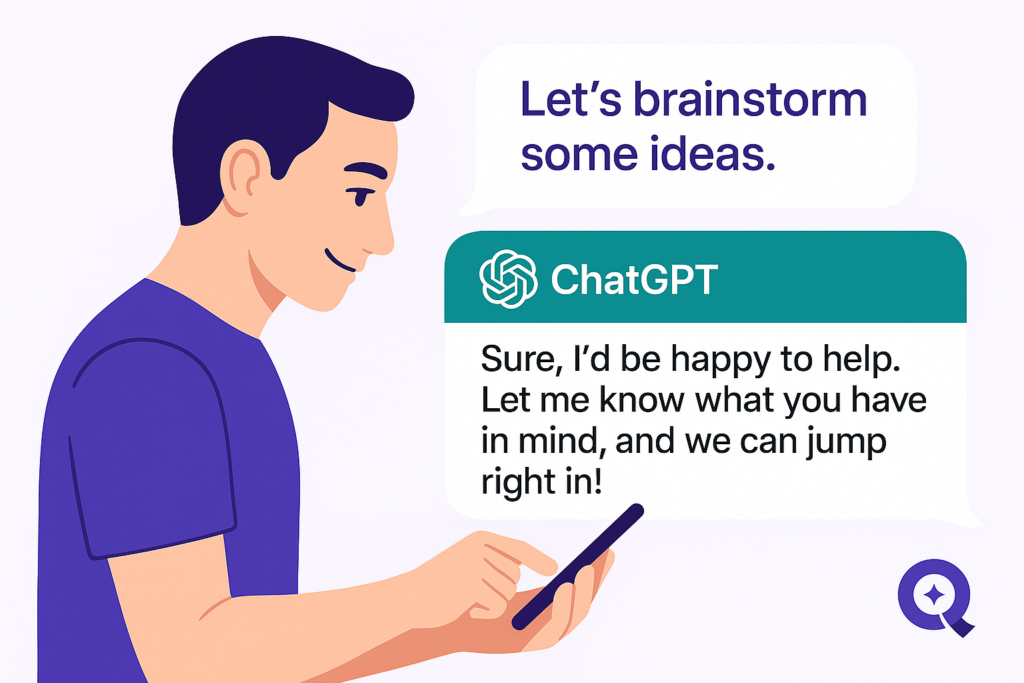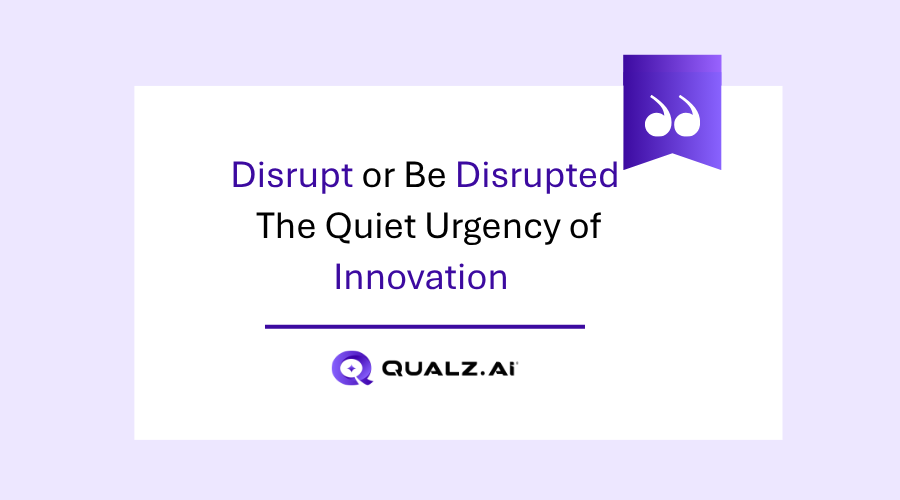I didn’t expect one of the most thought-provoking insights on innovation to come from a man who barely said a word the first time we met. It was a cold and windy evening in New York City, the kind that makes you pull your coat tighter and walk a little faster. But inside the towering skyscraper, the atmosphere was anything but cold. The space buzzed with energy, voices overlapping in eager conversation, the occasional clink of glasses, and soft bursts of laughter punctuating the air. It was a networking event, the kind where startup founders orbit around investors, hoping to make that one connection that shifts the trajectory of their business.
Amidst the crowd, I spotted someone standing quietly by himself. Polished but modest, reserved yet approachable, he carried a quiet presence that was hard to ignore. I noticed him early on. He didn’t speak much. He wasn’t trying to be the center of the room, and yet somehow, he commanded it. So naturally, I walked up, introduced myself, and got a soft smile and a gentle hello. That was it. Later that day, after our team had delivered our pitch, I ran into him again. This time, we talked. Talked. The kind of conversation where the initial stiffness fades and curiosity takes over. I learned quickly that he wasn’t just another seasoned investor. He held a portfolio that included several Fortune 500 companies.
I had so many questions. How did he choose the companies he backs? What trends does he see before others do? How does he stay sharp in a world changing by the minute? But instead of overwhelming him with everything I wanted to ask, I narrowed it down to one simple question:
“What’s the one thing you do that keeps you ahead?”
He looked up, smiled again, and said, almost too casually:
“I brainstorm with ChatGPT”

No dramatic pause. No mention of frameworks or five-step systems. He just shrugged and said that he opens it up when he’s at a coffee shop or walking his dog. That’s when ideas flow, and ChatGPT helps him think without pressure, without noise.
At that moment, something clicked. He wasn’t using AI as a tool. He was talking to it. And that distinction, that one small shift, sent me spiraling into a bigger idea. I am going to use an AI-moderated interview as an example. AI-moderated interviews are where AI conducts interviews with humans. But let it be clear. This isn’t really about AI-moderated interviews. I’m using the AI-moderated interview feature simply as an example for two reasons. First, some LinkedIn critics have called it “too futuristic,” which makes it the perfect example in this context. And second, it aligns perfectly with the central thesis of this piece. But let me be clear: this is not about any one feature. It’s about something much bigger. It’s about innovation as a mindset and a movement, one that reaches far beyond a single product or capability.

So, a bit of context first. I work at Qualz.ai, where we build AI-moderated interviews to accelerate and deepen qualitative research. Our AI probes, follows up, and adapts. On paper, it performs brilliantly. But that investor’s story made me reflect, not just on what our product does, but on what it could become. Because what he described wasn’t an interaction. It was a conversation. It took me back to something my qualitative research professor once said in graduate school:
“The best interview is a conversation.”
She meant that the richest insights don’t emerge from asking the right questions alone, but from creating the right context. One where the participant feels safe enough to say something unpolished, personal, and real. One where both sides shape the direction, not just the researcher. Somehow, this person was doing exactly that. But with AI.
Why? Maybe because people aren’t always available when ideas strike. Maybe because talking to humans carries risk, judgment, misunderstanding, and even competition. Maybe because AI offers something uniquely valuable: a frictionless space to explore without consequence. And suddenly, I wasn’t thinking about him anymore. I was thinking about the future where innovation is at the center. We’ve spent decades trying to make interviews more efficient. From focus groups to online surveys, from phone calls to in-depth interviews over Zoom. We’ve digitized the process. We’ve automated the logistics. But maybe we’ve missed something deeper.
What if the future of consumer insights isn’t just about faster data collection? What if it’s about creating AI systems that people want to talk to because they feel heard, not harvested?
- What if participants could ask questions back? What if the AI could say,
- You seemed unsure when you mentioned that. Want to go deeper?
- What if the tone of the conversation adapted to the participant’s mood, curiosity, or energy?
- What if every AI interview felt less like a session and more like a serendipitous chat with someone who gets it?
This isn’t a UX tweak. This is a philosophical pivot. From asking to listening. From extracting to co-creating.
In market research, we often talk about the voice of the customer. But whose voice is heard more clearly, the one responding to a script or the one invited into a conversation?
Consider the innovators already pushing in this direction:
- Stitch Fix uses AI not just to recommend clothes but to learn from free-form feedback, generating new product ideas.
- Duolingo uses LLMs to simulate conversations, not just quizzes, because they’ve realized that learning happens best when it feels real.
These aren’t customer service bots. These are systems designed to think with the user, not just for them. That’s where we should be heading. And not everyone will be ready. Some still argue that some things, such as AI-moderated interviews, are too futuristic.
We’re not building for those who doubt the present. We’re building for those ready to shape the future.
We’re imagining a tomorrow where qualitative interviews feel more like a thoughtful exchange at a café than a structured session in a lab. Where participants don’t just answer, but they wonder. Where AI doesn’t just record, but it responds. Where insights aren’t squeezed out of people but emerge between them and the machine. And we believe this is just the beginning. That investor didn’t change my roadmap. He changed my rhythm. He reminded me that the most powerful innovations don’t always shout. Sometimes, they whisper over coffee or on a dog walk and in a curious back-and-forth with a machine.
So if we’re serious about leading innovation in consumer insights, we need to ask a new kind of question. Not, how do we make our tools smarter? But how do we make them better conversationalists? Because the future doesn’t just belong to those who know the answers. It belongs to those who are bold enough to ask new kinds of questions and brave enough to ask them in a new kind of way.
Again, this Isn’t About AI-moderated interviews. It’s About Innovation. Let me be clear one more time. This isn’t just about AI-moderated interviews. This is about something much bigger. This is about the mindset of tomorrow. About building something that doesn’t need validation from yesterday. About designing for what’s possible, not just what’s proven.
Yes, at Qualz.ai we’re working to transform the way interviews happen. But that’s just the surface. Underneath it is a deeper current, a belief that we should constantly challenge the boundaries of what we think is “normal” in research, in conversation, and insight generation.
We’re not here to perfect the present.
We’re here to provoke the future.
If your instinct is to ask, “But is this viable today?” or “What about the limitations?” That’s valid. But that’s not the conversation we’re having here.

This conversation? It’s for the ones who see beyond the noise.
For the ones who aren’t afraid to imagine a future so different it sounds borderline irrational. It’s for the disruptors, the visionaries, and the builders. The ones who understand that innovation is not a reaction. It’s a rebellion against stagnation.
This is about rethinking the very act of thinking.
It’s about what becomes possible when we stop asking AI to just do what humans do and, instead, invite it to help us think differently. So if you’re someone who’s still negotiating the problems of yesterday, you might find this conversation uncomfortable. That’s okay. But if you’re someone who dreams of tomorrow, who feels pulled toward what doesn’t exist yet, then welcome. You’re exactly who this conversation was meant for.
- Innovation demands conversation. A conversation that stirs discomfort, sparks ideas, and challenges the status quo. It’s not polite or predictable, necessarily. It’s bold. It disrupts norms and erupts into something entirely new.
- Innovation is what moves us forward. It refuses to let us settle for today when tomorrow holds untapped potential. It is not optional.
- Innovation is always urgent. Without it, we’re stuck – repeating, recycling, stalling. The sun may rise quietly tomorrow, casting its soft light across a world still turning. But beneath that stillness, the pulse of progress pounds on.
Disrupt or be disrupted. Because even in silence, innovation waits for no one.
